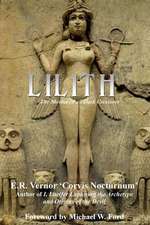In the Company of Demons: Unnatural Beings, Love, and Identity in the Italian Renaissance
Autor Professor Armando Maggien Limba Engleză Paperback – 5 iun 2008
Who are the familiar spirits of classical culture and what is their relationship to Christian demons? In its interpretation of Latin and Greek culture, Christianity contends that Satan is behind all classical deities, semi-gods, and spiritual creatures, including the gods of the household, the lares and penates.But with In the Company of Demons, the world’s leading demonologist Armando Maggi argues that the great thinkers of the Italian Renaissance had a more nuanced and perhaps less sinister interpretation of these creatures or spiritual bodies.
Maggi leads us straight to the heart of what Italian Renaissance culture thought familiar spirits were. Through close readings of Giovan Francesco Pico della Mirandola, Strozzi Cigogna, Pompeo della Barba, Ludovico Sinistrari, and others, we find that these spirits or demons speak through their sudden and striking appearances—their very bodies seen as metaphors to be interpreted. The form of the body, Maggi explains, relies on the spirits’ knowledge of their human interlocutors’ pasts. But their core trait is compassion, and sometimes their odd, eerie arrivals are seen as harbingers or warnings to protect us. It comes as no surprise then that when spiritual beings distort the natural world to communicate, it is vital that we begin to listen.
Maggi leads us straight to the heart of what Italian Renaissance culture thought familiar spirits were. Through close readings of Giovan Francesco Pico della Mirandola, Strozzi Cigogna, Pompeo della Barba, Ludovico Sinistrari, and others, we find that these spirits or demons speak through their sudden and striking appearances—their very bodies seen as metaphors to be interpreted. The form of the body, Maggi explains, relies on the spirits’ knowledge of their human interlocutors’ pasts. But their core trait is compassion, and sometimes their odd, eerie arrivals are seen as harbingers or warnings to protect us. It comes as no surprise then that when spiritual beings distort the natural world to communicate, it is vital that we begin to listen.
Preț: 267.44 lei
Nou
Puncte Express: 401
Preț estimativ în valută:
51.18€ • 52.87$ • 42.60£
51.18€ • 52.87$ • 42.60£
Carte tipărită la comandă
Livrare economică 25 martie-08 aprilie
Preluare comenzi: 021 569.72.76
Specificații
ISBN-13: 9780226501314
ISBN-10: 0226501310
Pagini: 257
Dimensiuni: 152 x 229 x 20 mm
Greutate: 0.39 kg
Ediția:2
Editura: University of Chicago Press
Colecția University of Chicago Press
ISBN-10: 0226501310
Pagini: 257
Dimensiuni: 152 x 229 x 20 mm
Greutate: 0.39 kg
Ediția:2
Editura: University of Chicago Press
Colecția University of Chicago Press
Notă biografică
Armando Maggi is professor of Romance languages and literatures and a member of the Committee on the History of Culture at the University of Chicago. He is the author of several books, including Satan’s Rhetoric and The Resurrection of the Body: Pier Paolo Pasolini from Sade to Saint Paul, forthcoming from the University of Chicago Press.
Cuprins
Preface: Bodies of Metaphors
Introduction: Bodies of Desire
1. To Read the Body of a Monster
Exegesis and Witchcraft in Strix by Giovan Francesco Pico della Mirandola
2. To Recall the Spirits' Past
Memory and Demonology in Strozzi Cigogna's Palace of Marvels and of the Great Enchantments of the Spirits and of the Entire Nature
3. "The Shadows and Their Beloved Bodies"
Introduction: Bodies of Desire
1. To Read the Body of a Monster
Exegesis and Witchcraft in Strix by Giovan Francesco Pico della Mirandola
2. To Recall the Spirits' Past
Memory and Demonology in Strozzi Cigogna's Palace of Marvels and of the Great Enchantments of the Spirits and of the Entire Nature
3. "The Shadows and Their Beloved Bodies"
Medicine, Philosophy of Love, and Demonology in Pompeo della Barba's Interpretation of a Platonic Sonnet
4. What Does Human Mean?
Beings against Nature in Ludovico Maria Sinistrari's Demoniality
4. What Does Human Mean?
Beings against Nature in Ludovico Maria Sinistrari's Demoniality
A Conclusion: Bodies of Salvation
Notes
Bibliography
Index
Notes
Bibliography
Index










